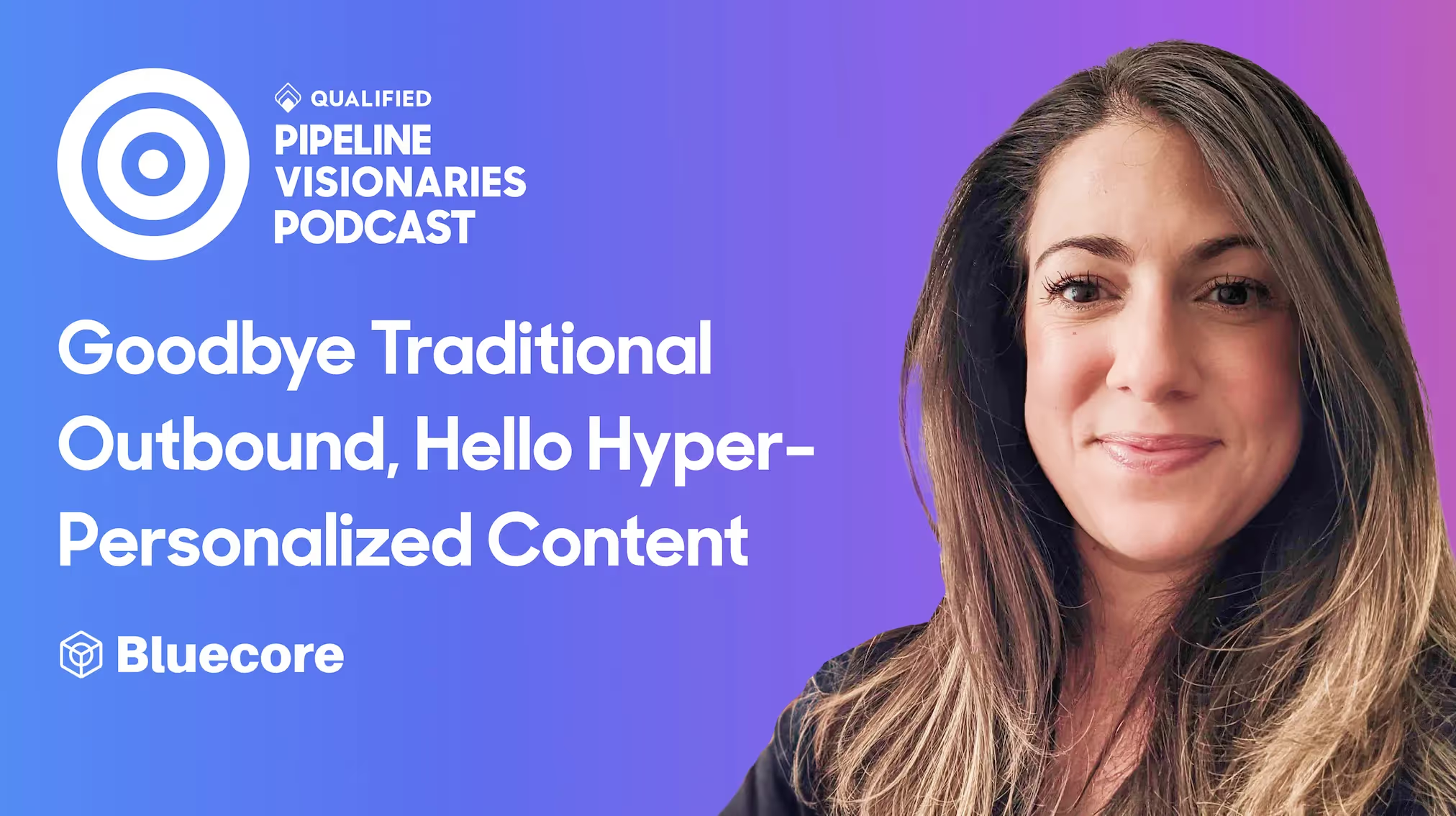Goodbye Traditional Outbound, Hello Hyper-Personalized Content
Sarah Cascone, VP of Marketing at Bluecore, shares why she believes traditional outbound is fading away and how marketing is all about curating hyper-personalized content.




Sarah Cascone, VP of Marketing at Bluecore, shares why she believes traditional outbound is fading away and how marketing is all about curating hyper-personalized content.

This episode features an interview with Sarah Cascone, VP of Marketing at Bluecore, a retail marketing platform that enables marketers to turn data into revenue-generating campaigns, in minutes.
In this episode, Sarah educates us on what her team calls the Relationship Demand Gen Chain, how to foster a meaningful customer community, and how ruthless prioritization is a superpower. Sarah also shares with us why she believes traditional outbound is fading away and that now, marketing is all about curating hyper-personalized content.
Key Takeaways:
Stay up to date with weekly drops of fresh B2B marketing and sales content.
Sarah Cascone, VP of Marketing at Bluecore, shares why she believes traditional outbound is fading away and how marketing is all about curating hyper-personalized content.


This episode features an interview with Sarah Cascone, VP of Marketing at Bluecore, a retail marketing platform that enables marketers to turn data into revenue-generating campaigns, in minutes.
In this episode, Sarah educates us on what her team calls the Relationship Demand Gen Chain, how to foster a meaningful customer community, and how ruthless prioritization is a superpower. Sarah also shares with us why she believes traditional outbound is fading away and that now, marketing is all about curating hyper-personalized content.
Key Takeaways:
Stay up to date with weekly drops of fresh B2B marketing and sales content.
Sarah Cascone, VP of Marketing at Bluecore, shares why she believes traditional outbound is fading away and how marketing is all about curating hyper-personalized content.


This episode features an interview with Sarah Cascone, VP of Marketing at Bluecore, a retail marketing platform that enables marketers to turn data into revenue-generating campaigns, in minutes.
In this episode, Sarah educates us on what her team calls the Relationship Demand Gen Chain, how to foster a meaningful customer community, and how ruthless prioritization is a superpower. Sarah also shares with us why she believes traditional outbound is fading away and that now, marketing is all about curating hyper-personalized content.
Key Takeaways:
Stay up to date with weekly drops of fresh B2B marketing and sales content.
Sarah Cascone, VP of Marketing at Bluecore, shares why she believes traditional outbound is fading away and how marketing is all about curating hyper-personalized content.



This episode features an interview with Sarah Cascone, VP of Marketing at Bluecore, a retail marketing platform that enables marketers to turn data into revenue-generating campaigns, in minutes.
In this episode, Sarah educates us on what her team calls the Relationship Demand Gen Chain, how to foster a meaningful customer community, and how ruthless prioritization is a superpower. Sarah also shares with us why she believes traditional outbound is fading away and that now, marketing is all about curating hyper-personalized content.
Key Takeaways:
Discover how we can help you convert more prospects into pipeline–right from your website.